HMMA Q2 2021 Newsletter
May 19, 2021HMMA-820 TN03-07 Guidelines for Glazing of Hollow Metal Transoms, Sidelights and Windows
Hollow metal transoms, sidelights and windows are an excellent choice at exterior locations. Proper application of sealing methods commonly used with other window systems will result in excellent performance. In addition, hollow metal is a superior solution for security, durability, thermal transfer, wind load, and seismic performance.
Hollow metal shall be manufactured in compliance with HMMA Guide Specifications and TechNotes HMMA-820 TN02-03, Continuously Welded Frames. It should be noted that a continuously welded assembly alone does not ensure a watertight condition. Whenever possible, it is strongly recommended that glazing material be installed on the exterior rabbet of the frame assembly, which will help act as a deterrent to water penetration.
The Hollow Metal manufacturer does not control the installation of their product or application of perimeter caulking, joint sealants, or glazing materials. This work should be specified in the installation / Glass / Glazing / Caulking section of the specifications.
These are recommended guidelines for the prevention of air and water infiltration for exterior hollow metal. A primary source of leakage is the interface of the wall and the hollow metal frame. The contractor must ensure proper flashing and sealant procedures are followed as specified in the contract documents. The glazing installer must also follow proper caulking methods during installation of glazing, panels, and/or operable window units. To ensure that glazing, panels and/or operable window units are sealed properly, these are to be installed in the field.
Methods should be successfully tested to the following standards: ASTM E283, Air Infiltration, ASTM E331, Static Water Penetration, and AAMA 501.1, Dynamic Water Penetration.
The sealant tested was Corning 795 silicone. It is the responsibility of the general contractor to ensure that this or an equivalent sealant is used. Silicone sealant cannot be painted. Colored silicone sealants are available.
Click here to read HMMA-820 TN03-07.
Hollow metal shall be manufactured in compliance with HMMA Guide Specifications and TechNotes HMMA-820 TN02-03, Continuously Welded Frames. It should be noted that a continuously welded assembly alone does not ensure a watertight condition. Whenever possible, it is strongly recommended that glazing material be installed on the exterior rabbet of the frame assembly, which will help act as a deterrent to water penetration.
The Hollow Metal manufacturer does not control the installation of their product or application of perimeter caulking, joint sealants, or glazing materials. This work should be specified in the installation / Glass / Glazing / Caulking section of the specifications.
These are recommended guidelines for the prevention of air and water infiltration for exterior hollow metal. A primary source of leakage is the interface of the wall and the hollow metal frame. The contractor must ensure proper flashing and sealant procedures are followed as specified in the contract documents. The glazing installer must also follow proper caulking methods during installation of glazing, panels, and/or operable window units. To ensure that glazing, panels and/or operable window units are sealed properly, these are to be installed in the field.
Methods should be successfully tested to the following standards: ASTM E283, Air Infiltration, ASTM E331, Static Water Penetration, and AAMA 501.1, Dynamic Water Penetration.
The sealant tested was Corning 795 silicone. It is the responsibility of the general contractor to ensure that this or an equivalent sealant is used. Silicone sealant cannot be painted. Colored silicone sealants are available.
Click here to read HMMA-820 TN03-07.
Removable Stop on Interior Side
Whenever possible, it is strongly recommended that the glazing material be installed on the exterior rabbet of the frame assembly, which will act as a deterrent to water penetration. However when glazing on the interior side is required we recommend the following steps be taken.
1. Continuous cap bead around perimeter of glass on exterior side
2. At the same time as the cap bead is applied, the soffit, stop and rabbet area at all joints shall be caulked. Caulking shall be a continuous homogeneous bead from the cap bead to the face of the frame.
3. It is recommended that horizontal mullions and sills be sloped to shed water.
Sill channels shall be continuously sealed and all vertical frame members shall be continuously sealed around profile at floor.
1. Continuous cap bead around perimeter of glass on exterior side
2. At the same time as the cap bead is applied, the soffit, stop and rabbet area at all joints shall be caulked. Caulking shall be a continuous homogeneous bead from the cap bead to the face of the frame.
3. It is recommended that horizontal mullions and sills be sloped to shed water.
Sill channels shall be continuously sealed and all vertical frame members shall be continuously sealed around profile at floor.
All exposed seems at operable window inserts shall be continuously sealed and water shall not be permitted to weep onto the hollow metal frame members at an area that has not been sealed.
Click here to read HMMA-820 TN03-07.
Removable Glass Stop on Exterior Side
Space between edge of glass and steel frame shall receive a continuous heel bead of sealant. Care shall be taken to ensure adhesion of sealant to glass edge and steel frame. At the same time as the heel bead is applied, the rabbet area at all joints shall be caulked. Caulking shall be a continuous homogeneous bead from the heel bead to the face of the frame.
Care shall be taken to ensure that each piece of removable glass stop channel is reinstalled at the same location and direction. This will ensure that glass stop screws go back into the original holes. Caulk threads prior to reinstalling glass top screws.
It is recommended that horizontal mullions and sills be sloped to shed water or formed with a smaller rabbet dimension at the exterior side to minimize exposed surface areas.
Click here to read HMMA-820 TN03-07.

Care shall be taken to ensure that each piece of removable glass stop channel is reinstalled at the same location and direction. This will ensure that glass stop screws go back into the original holes. Caulk threads prior to reinstalling glass top screws.
It is recommended that horizontal mullions and sills be sloped to shed water or formed with a smaller rabbet dimension at the exterior side to minimize exposed surface areas.
Click here to read HMMA-820 TN03-07.






